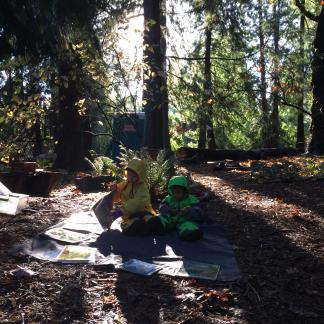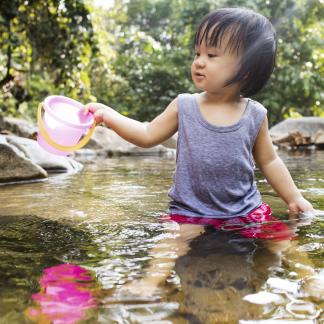It is easy to accept that a one-year-old baby is not yet able to dress herself unassisted, or to put on socks and shoes without help. Even people who do not spend their days working and playing with very young children understand that babies and toddlers follow a gradual progression in terms of motor development.
When discussing academics in early childhood, however, some policymakers and administrators often make the mistake of believing that earlier is better. They insist that early reading leads to greater success in the classroom, and they are eager to push so-called benchmark skills while ignoring the skills that ought to come first.
As nature preschool teachers, we often find ourselves in the middle of this conversation. Parents who enroll their children in our programs are, for the most part, in favor of outdoor exploration and play. At the same time, they want their children to enter kindergarten with all the necessary tools to succeed. For many parents, this means a focus on math and literacy.
Our own approach to school readiness, therefore, is not what they expect. We start by having children learn to put on their own rain boots.
We do not mean this in the metaphorical sense. We mean it quite literally. Managing rain boots – or socks, or even warm-weather sandals with straps - are an important part of the kindergarten readiness process.
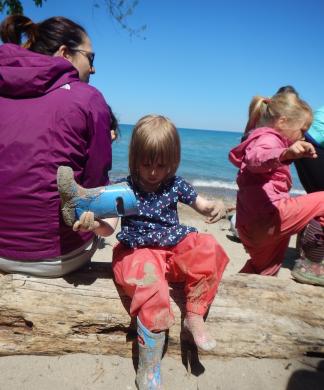
Learning how to dress one’s self falls into what occupational therapists call “Activities of Daily Living”. ADL skills include self-feeding, toileting, and personal hygiene, such as blowing one’s own nose. Those of us who teach in nature-based classrooms appreciate that learning to care for one’s personal needs while also playing outdoors is not easy. In our program, which takes place in Wisconsin, there are coats, hats, and scarves to manage; there can be emergency bathroom needs; and then there’s the challenge of blowing one’s nose on a chilly day while wearing waterlogged mittens.
We understand that mastering ADL skills takes time and will vary based on individual needs. Nevertheless, we have seen that, as children gain confidence in caring for themselves, they also develop an increasing level of comfort and confidence in being in nature.
We place a great deal of value on self-efficacy at our nature preschool, that is, on children knowing that they have the skills they need to navigate new situations. Unlike self-esteem, which often depends on praise from others, self-efficacy develops when children have opportunities to discover their personal strengths. These will range from child to child. Some children discover an aptitude for balancing on logs and ice. Others develop empathy for animals. Still others are good at making friends, at playing cooperatively, or at solving problems. It is our hope that by the end of the year, they all feel confident in their ability to put on their own rain pants and boots.
Many children, especially those who have just turned three, are new to helping themselves. We do not advocate simply leaving them to figure it out unassisted. However, when parents ask, “But will they be prepared for school?” while simultaneously pulling socks onto feet and lifting feet into boots, we realize that we need to be better at sharing the importance of foundational skills.
Foundational skills in the preschool years include developing large and fine motor skills, developing self-regulation, learning to follow directions, and learning how to think through problems. Teaching a child to put on his own gear encompasses all of these.
As children learn to dress themselves, they are strengthening physical development, improving coordination and memory, and learning spatial and body awareness. Learning to manipulate one’s own gear also serves the very practical purpose of freeing up parents’ and teachers’ time, while enabling children to fix any problems that may occur when playing outdoors, such as dislodging pebbles and sand from their boots or taking off mittens.
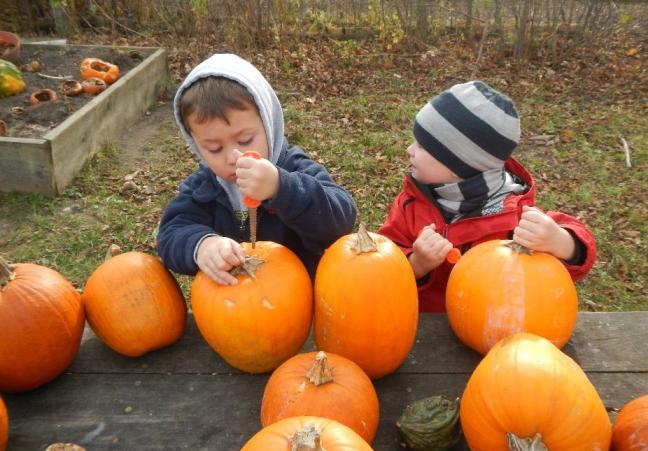
We do understand that this process takes time, time that often feels unavailable. A parent frequently has to make a choice between letting a child struggle with boots and being twenty minutes late for school. That is one the reasons we have made teaching children how to put on, and take off, their outdoor gear an active part of our preschool curriculum. Rather than feel that the time we spend on our boots is keeping us from other activities, we try to view the process as an important activity unto itself.
It is worth noting that because our program begins outdoors, children at our nature preschool start by learning to take their outer gear off. This works well, as taking gear off tends to be easier, and because it fits in nicely with our daily routine. We will proceed, however, to putting outer gear on when we feel the children are developmentally ready.
In October of 2015, journalist Kimberly Marselas wrote an article called “Losing Our Grip: More Students Entering Schools without Fine Motor Skills”. It quickly made the rounds on social media, highlighting an alarming trend in which kindergarten teachers reported that a growing number of children lacked the basic motor skills of previous generations. They did not have the hand strength to manipulate glue bottles or manage paper and pencils. They were unsure how to cut with scissors. Several children lacked the adequate trunk strength to sit still for extended periods. One of the reasons given, beyond the increase in screen time, was a decrease in unstructured outdoor free play. Unstructured is the key word here: outside time is not enough. The freedom to play in a nebulous way is something all children need.
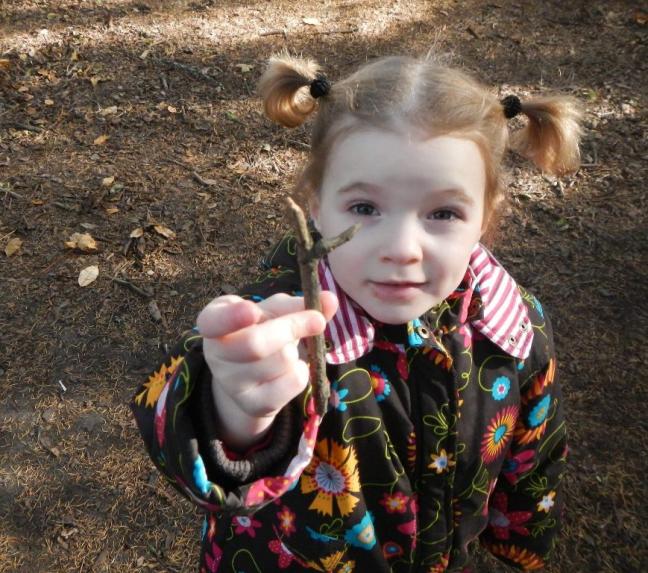
If children lack the hand strength and coordination needed to manage paper and scissors, and if, at age five, they are still clutching their pencils in their fists, we are not setting them up for academic success; we are setting them up for occupational therapy.
This is why we have a made a point of communicating to our families the multiple ways in which nature-based play supports large and fine motor development. We explain that by pulling caps off acorns, shucking corn, and building fairy houses in the woods, the children are strengthening their fine motor skills. When they use sweep nets, pond nets, and rake up leaves, their core strength improves, along with their muscles and stamina. And when we encourage children to manage, with as little help as possible, their own outdoor gear and rain boots, they are developing not only motor dexterity and strengthening body awareness, but are also growing in confidence and self-sufficiency. They are learning not to give up when faced with new challenges. They are learning that even things that are difficult at first get easier with repetition. This is what leads to academic success. Just imagine how well your children will do, we tell parents, knowing that on the first day of kindergarten they have the necessary skills to put on their very own rain boots.
About the Author



